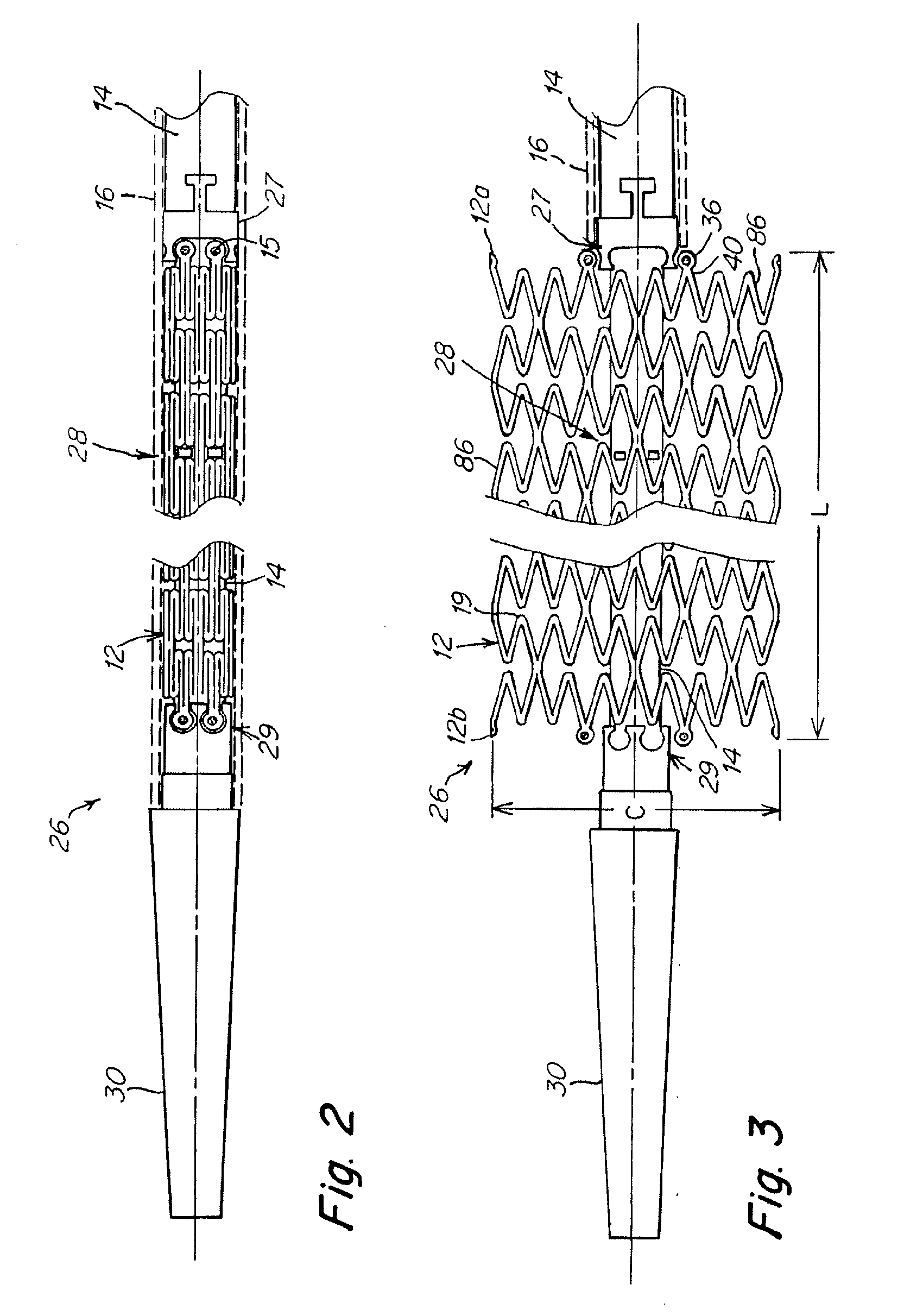Implant and delivery system with multiple marker interlocks
a delivery system and implant technology, applied in the field of vascular implant delivery systems, can solve the problems of stent premature deployment, large expansile force, dislocation of stents, etc., and achieve the effects of reducing the deployment force of implants, reducing the constrained diameter of implants, and reducing the length of implant constraints
- Summary
- Abstract
- Description
- Claims
- Application Information
AI Technical Summary
Benefits of technology
Problems solved by technology
Method used
Image
Examples
example 1
[0071] Stents 6 mm in diameter and 150 mm or 200 mm long and having structures similar to that shown in FIG. 5A were laser cut from binary nitinol alloy tubing, expanded, and heat treated using processes known in the art. Stents (150 mm long or 200 mm long) were mounted on prior art Stent Delivery Systems (SDS) and stents (200 mm long) were mounted on inventive SDS. Aside from differences associated with stent length, inventive SDS were identical to prior art SDS except that 1) distal interlocks were present on inventive SDS and absent on prior art SDS, and 2) inventive SDS were comprised of proximal pushers while prior art SDS were comprised of proximal retainers, and 3) inventive SDS were comprised of improved inner members while prior art SDS were comprised of prior art inner members. Improved inner members (0.380″ inside diameter×0.045″ outside diameter) were comprised of 0.001″ thick polyimide inner layer, 0.0015″ thick nylon 12 outer layer and 16 braided type 304V stainless st...
PUM
 Login to View More
Login to View More Abstract
Description
Claims
Application Information
 Login to View More
Login to View More - R&D
- Intellectual Property
- Life Sciences
- Materials
- Tech Scout
- Unparalleled Data Quality
- Higher Quality Content
- 60% Fewer Hallucinations
Browse by: Latest US Patents, China's latest patents, Technical Efficacy Thesaurus, Application Domain, Technology Topic, Popular Technical Reports.
© 2025 PatSnap. All rights reserved.Legal|Privacy policy|Modern Slavery Act Transparency Statement|Sitemap|About US| Contact US: help@patsnap.com



